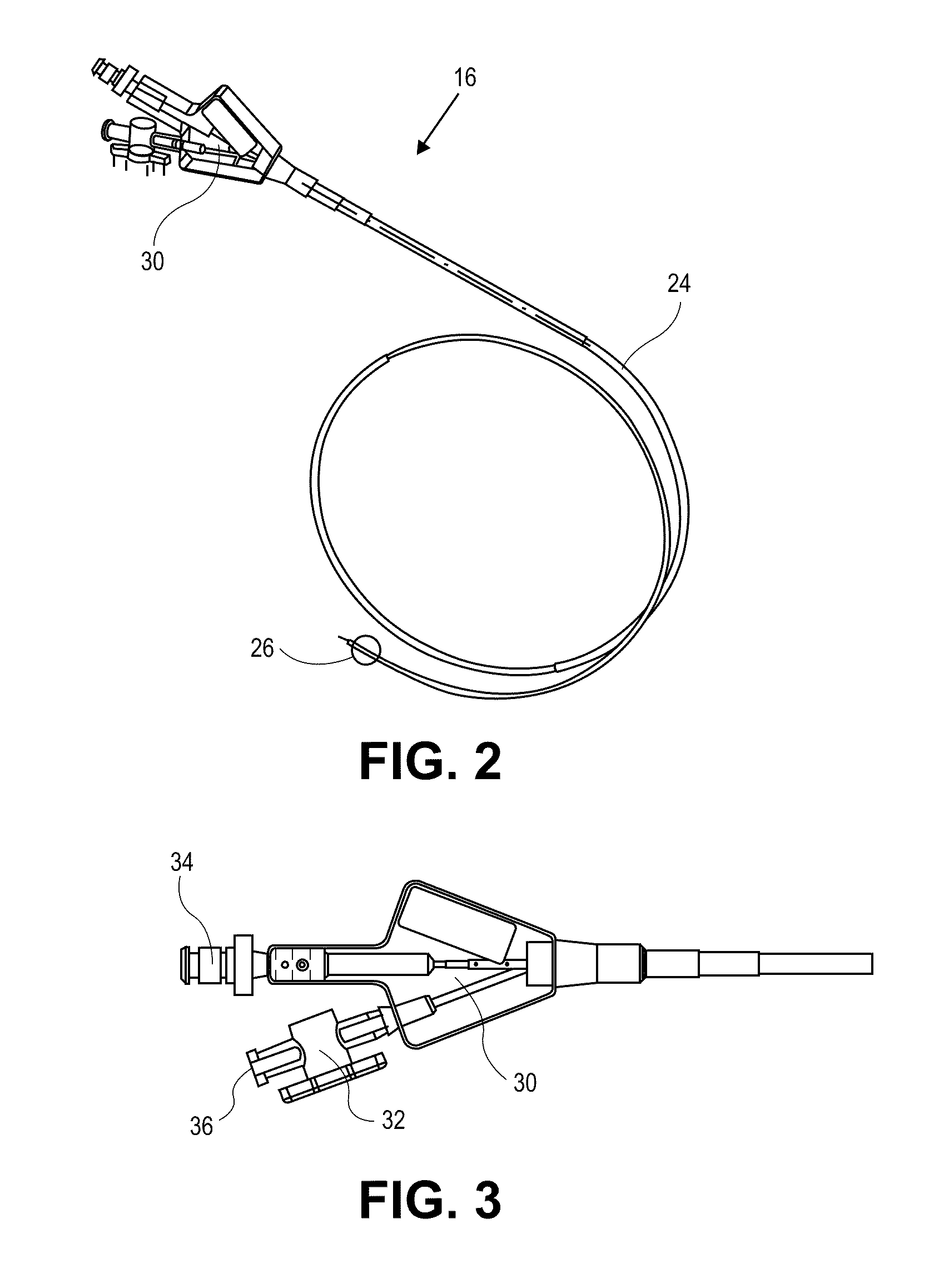Determining Patient-Specific Vapor Treatment and Delivery Parameters
a technology of bronchodilator and patient, applied in the field of intrabronchial catheter, can solve the problems of slowing down the progression of copd, no evidence that bronchodilators are capable of significantly improving fev/sub>1/sub> or arresting or slowing the inexorable decline in lung function, and achieve the effect of reducing the volume of the lung
- Summary
- Abstract
- Description
- Claims
- Application Information
AI Technical Summary
Benefits of technology
Problems solved by technology
Method used
Image
Examples
Embodiment Construction
[0045]The present invention relates generally to using vapor to treat lung tissue. This therapy may be called Bronchoscopic Thermal Vapor Ablation or BTVA. In general, the transfer of energy to an emphysematous lung region may result in ablation of micro vascularization which would reduce the amount of blood flowing to that region. This reduction in blood flow, along with the reduction in ventilation to poorly functioning regions of lung, can result in more blood flow to better functioning regions of lung. This can result in an increase in diffusion capacity (DLCO). Increases in DLCO can result in several potential benefits to the patient including increase in exercise capacity, reduction in dyspnea (shortness of breath) and reduction in the need for supplemental oxygen.
[0046]The application of vapor can invoke lung growth which may result in an increase in pulmonary flow and or parenchyma volume or mass that might result in increased diffusion capacity (DLCO) without measurable cha...
PUM
 Login to View More
Login to View More Abstract
Description
Claims
Application Information
 Login to View More
Login to View More - R&D
- Intellectual Property
- Life Sciences
- Materials
- Tech Scout
- Unparalleled Data Quality
- Higher Quality Content
- 60% Fewer Hallucinations
Browse by: Latest US Patents, China's latest patents, Technical Efficacy Thesaurus, Application Domain, Technology Topic, Popular Technical Reports.
© 2025 PatSnap. All rights reserved.Legal|Privacy policy|Modern Slavery Act Transparency Statement|Sitemap|About US| Contact US: help@patsnap.com



